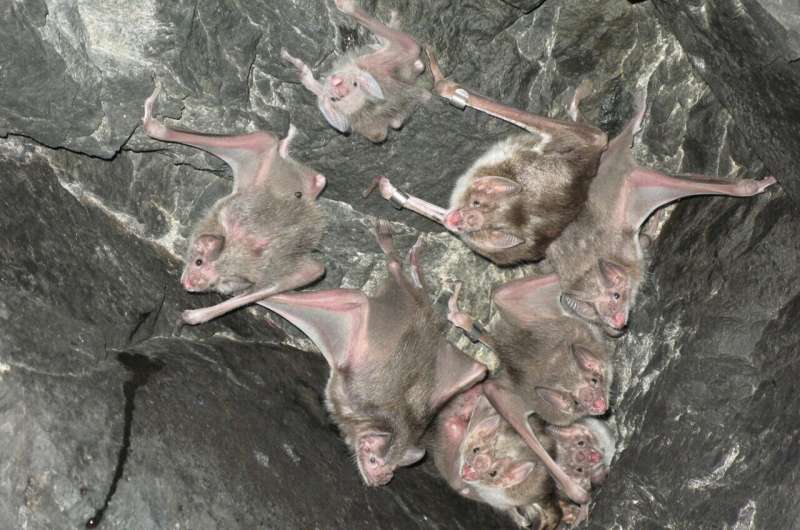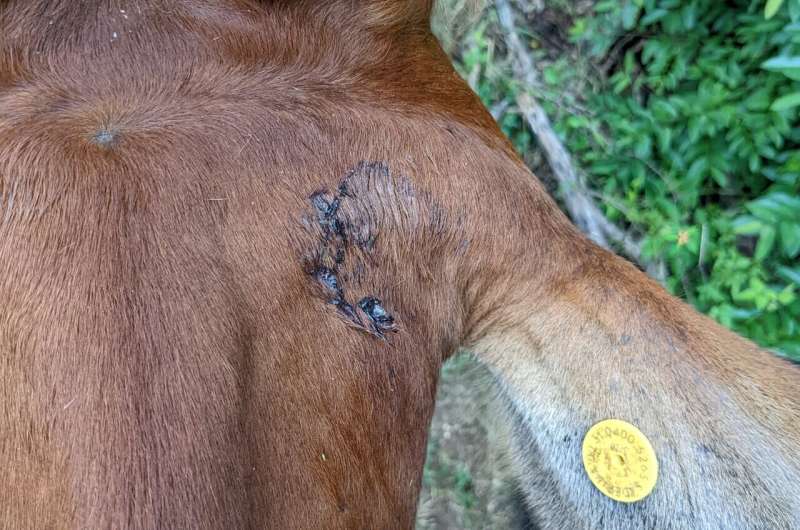Small cluster of vampire bats. Credit: Daniel Streicker, University of Glasgow
A team of biologists at the University of Glasgow, working with colleagues from several institutes in Perú, has found that culling bat colonies after a rabies outbreak in livestock is not an effective way to halt the spread of the disease. In their study, published in the journal Science Advances, the group studied infection rates and conducted viral genome sequencing to better understand rabies transmission in bats to livestock.
For many years, cattle ranchers and other livestock managers in South America have been battling periodic outbreaks of rabies. And while the disease is transmitted by a variety of creatures, the primary threat to livestock is believed to come from vampire bats. Such bats find easy meals preying on defenseless domesticated animals. The wounds they leave can sometimes lead to skin infections, but the diseases they carry hold the greatest threat. Of primary concern is rabies, which is lethal. The traditional means for combating such outbreaks has been using one or more types of vampiricide—poisons that are spread from bat to bat, killing them.
Historically, vampiricides have been used in two ways, either before or during outbreaks. Neither approach has been rigorously tested for effectiveness. In this new effort, the researchers sought to determine whether culling bat colonies via vampiricides is an effective means of combating rabies outbreaks.
The work involved first studying infection rates for several cattle herds in Perú. They then conducted genome sequencing of rabies viruses collected from infected cows in the area. Both studies were conducted over a two-year period.
Bat bite on cow, showing dried blood. Credit: Daniel Streicker, University of Glasgow.
The researchers were not able to find a measurable reduction in cattle infections (compared to herds where culling had not been conducted) when ranchers conducted culling operations on bats after finding infections in their herds. They even found evidence that infection rates increased. They did, however, find reductions in infection rates when the ranchers culled bats prior to detecting infections in their herds.
The research team suggests that applying vampiricides after an outbreak has begun leads the bats to abandon their colony and spread out across the local area looking for new places to live. In so doing, they reduce the spread of the disease among the bats, but increase rates in cattle, as lone infected bats infect many cows before dying themselves.
More information: Mafalda Viana et al, Effects of culling vampire bats on the spatial spread and spillover of rabies virus, Science Advances (2023). DOI: 10.1126/sciadv.add7437. www.science.org/doi/10.1126/sciadv.add7437
Journal information: Science Advances
© 2023 Science X Network
























